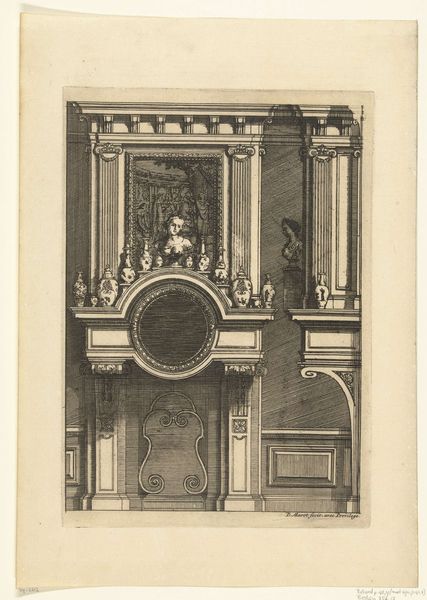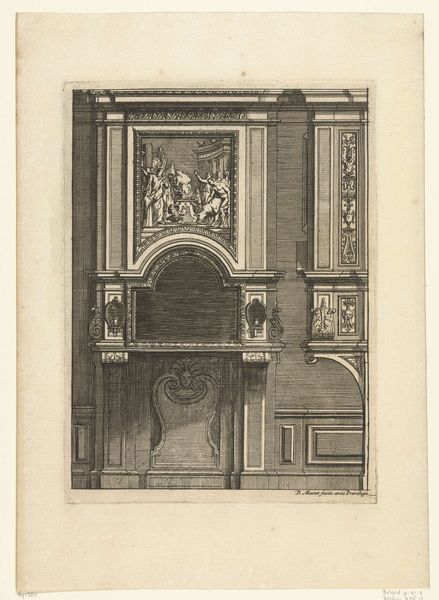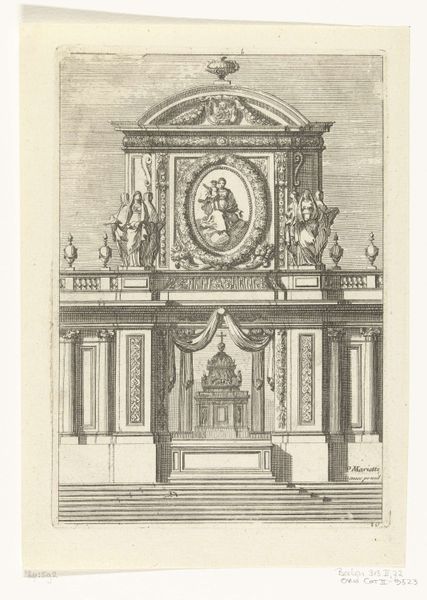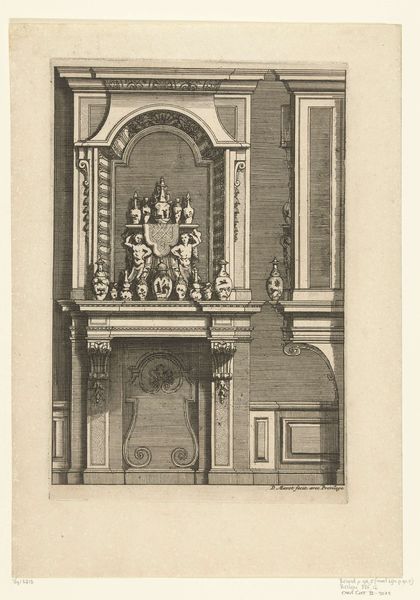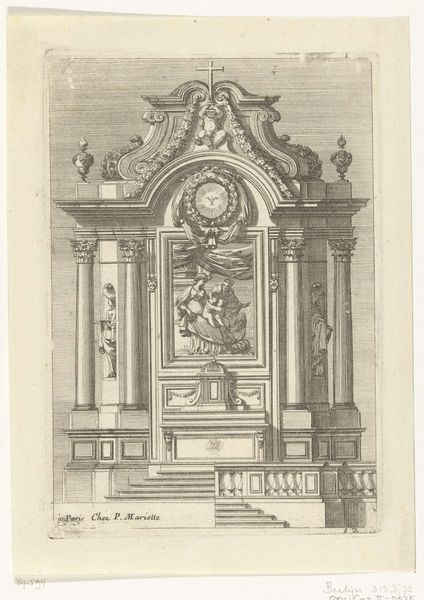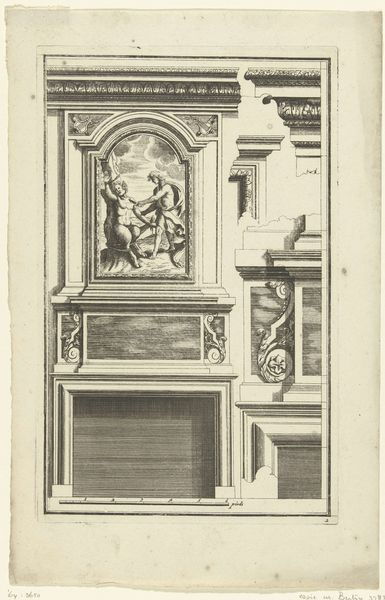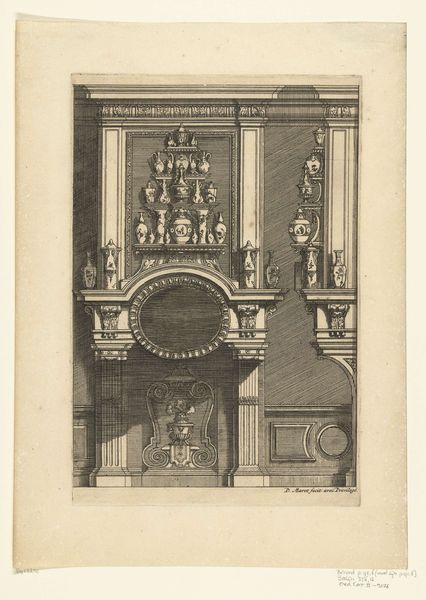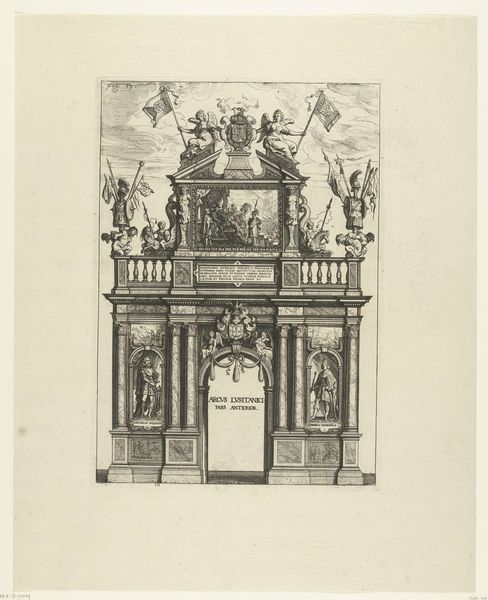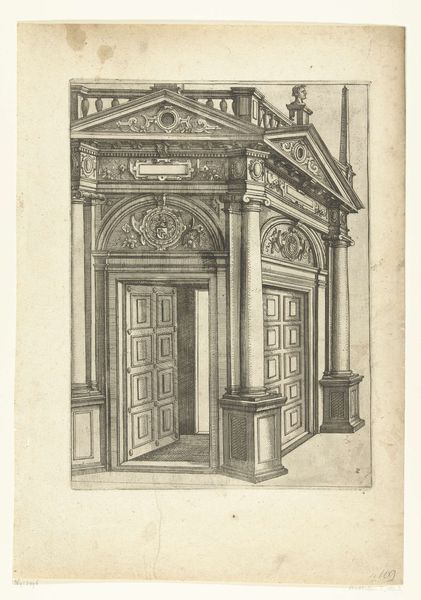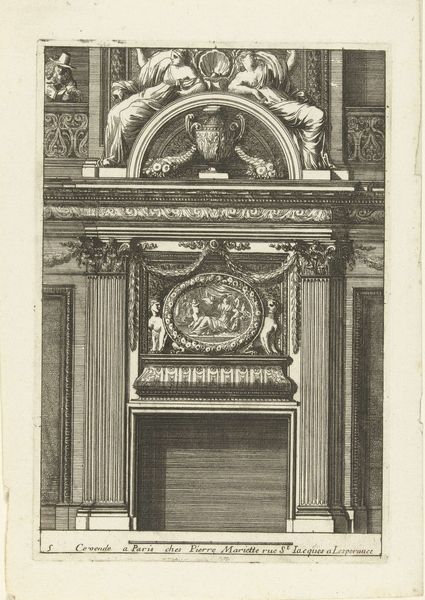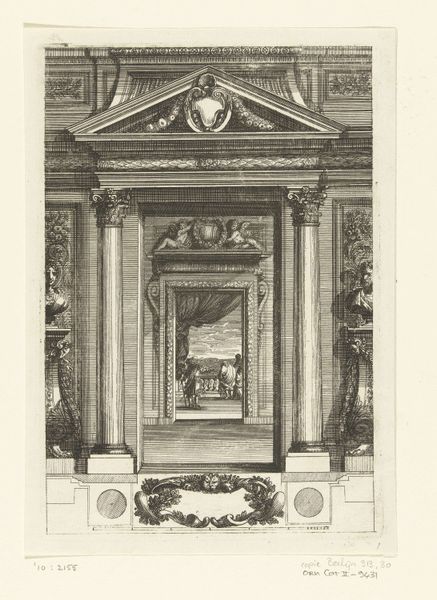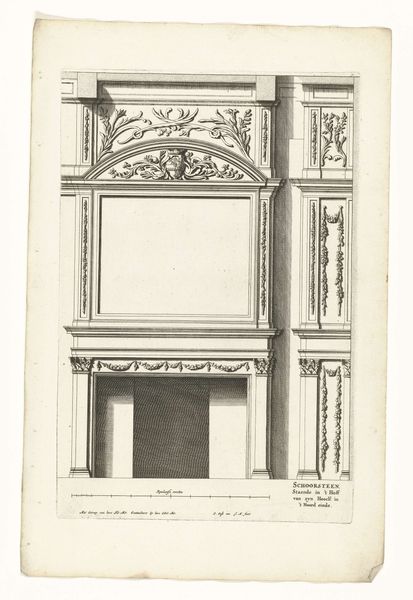
drawing, print, engraving, architecture
#
drawing
#
aged paper
#
toned paper
#
light pencil work
#
baroque
#
mechanical pen drawing
# print
#
pencil sketch
#
old engraving style
#
sketch book
#
personal sketchbook
#
pen-ink sketch
#
pen work
#
engraving
#
architecture
Dimensions: height 246 mm, width 196 mm
Copyright: Rijks Museum: Open Domain
Editor: So this is *Onderboezem voor een wand*, or "Base for a wall", created before 1703 by Daniël Marot. It's an engraving, currently held at the Rijksmuseum. There’s a striking formality to the design; everything is meticulously planned. How do you interpret this work? Curator: What I see is a visual articulation of power and social hierarchy during the Baroque era. Marot wasn’t simply designing a wall; he was crafting a statement. Consider the inherent exclusivity of such detailed craftsmanship; who were the patrons of such elaborate designs, and what did this ornamentation communicate about their status in society? Editor: So, it's not just decorative, but also political? Curator: Precisely! The very act of commissioning and displaying such opulence served to reinforce existing social structures, almost acting as propaganda. Think about who *didn’t* have access to such artistry, and what messages were communicated through this visual disparity. It's about using material culture to reinforce asymmetrical power dynamics. How do you see gender roles playing out in such interior design? Editor: I hadn’t really thought of gender… but are you suggesting there were distinct feminine and masculine spaces? Did this engraving propose a particular type of domestic space? Curator: It's highly likely. Consider who was expected to occupy these spaces, and whose gaze the designs were catering to. Interior design becomes a stage, shaping the performance of gender. And those floral motifs? Editor: I see your point. So much to think about. Curator: Indeed. By understanding design choices through this lens, we start unraveling so much more. I think, perhaps, understanding this helps understand design itself.
Comments
No comments
Be the first to comment and join the conversation on the ultimate creative platform.
